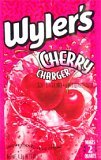Advertisements

You are here: Home > All About Hand Dyeing > FAQs > Acid Dyes FAQs > Food Dyes
Food colorings can be used as acid dyes, on wool, silk, and other animal fibers. It cannot be used to dye cotton or other cellulose fibers!
Many colorings that are legal for use in foods in one country are banned in another; conversely, those dyes allowed in the latter country may be banned in the former. In the US, the list of legal synthetic food dyes is short:
| dye name | F D & C food dye number | Colour Index Name | Colour Index number | European additive number | chemical class |
|---|---|---|---|---|---|
| allura red | red dye #40 | food red 17 | 16035 | E129 | monoazo |
| brilliant blue FCF | blue #1 | acid blue 9; food blue 2 | 42090 | E133 | triarylmethane |
| sunset yellow FCF | yellow #6 | acid yellow 6; food yellow 3 | 15985 | E110 | monoazo |
| indigotine or indigo carmine | blue #2 | food blue 1 | 73015 | E132 | |
| fast green FCF | green#3 | food green 3 | 42053 | INS 143 | triarylmethane |
| erythrosine | red #3 | acid red 51; food red 14 | 45430 | E127 | xanthene |
| tartrazine | yellow #5 | acid yellow 23; food yellow 4 | 19140 | E102 | monoazo |
All other food colorings in the US, aside from a few natural dyes such as annatto, turmeric (spice), beet extract, and carmine (red insects, used to color yogurt and other foods), are composed of different combinations of the above.
More colors may be obtained in the form of cake coloring, such as in Wilton cake decorating colors.
KoolAid and similar drink mix products are also good sources of some of the artificial food colors, complete with citric acid to serve as the acid (be sure not to get the kind with sugar added!); see How can I tie dye with Kool-aid or food coloring?
The best all-around source I've seen for food dyes may be The Coloration
Station. In addition to the food colorings, the
Coloration Station also sells
dyes that are safe for use on the
skin - D&C colors - so they must be safe for use in dyeing, although they
are not considered safe to eat. Note that the "lake" colors are insoluble; you
want the non-lake colors, for most dyeing purposes.
 Back to list of FAQs
Back to list of FAQs
Page created: April 3, 2003
Last updated: April 24, 2007
Downloaded: August 19, 2025